Looking back: Events that shaped the year
Trials and tragedies: 10 Singapore events that shaped 2015
There was a smattering of good news - hooray for the Botanic Gardens and MediShield Life - amid the bad but, as the year rolls to a close, it seems 2015 will be remembered as a year of trials and tragedies.
Sign up now: Get ST's newsletters delivered to your inbox
Follow topic:
1. Massive MRT breakdown
More than 413,000 commuters were affected by the MRT's worst breakdown on July 7, when two heavily used train lines were crippled for more than two hours.
The shutdown of the North- South and East-West lines during the evening peak hours resulted in long queues at bus stops and taxi stands as stranded commuters struggled to find alternative means of transport.
Many took hours to reach home, and some even chose to walk all the way.
The breakdown was caused by intermittent tripping of the rail power system at multiple locations.
Investigations later pinpointed a water leak in the tunnel between the Tanjong Pagar and Raffles Place stations as the culprit. It resulted in salty deposits accumulating on the insulator of the power-supplying third rail.
With the insulator's effectiveness reduced, electricity flowed from the insulator to the ground, resulting in a higher-than-normal voltage between the running rail and the ground, hence tripping the power system.
For the maintenance lapse, operator SMRT was fined $5.4 million, the largest penalty meted out for a rail breakdown.
The Land Transport Authority said the incident could have been prevented if SMRT had rectified the tunnel water seepage, and that the operator was fully responsible.
But despite the chaos caused on July 7 evening, there were acts of kindness.
Car drivers posted offers of rides to stranded commuters on social media; others who drove by affected areas picked up whoever they could.
At Changi Airport, one of the stops on the East-West Line, airport staff handed out bottles of water to people affected by the breakdown.
At a McDonald's outlet at Changi City Point shopping mall, staff gave out free drinks.
Adrian Lim
2. Botanic Gardens is Unesco Heritage site
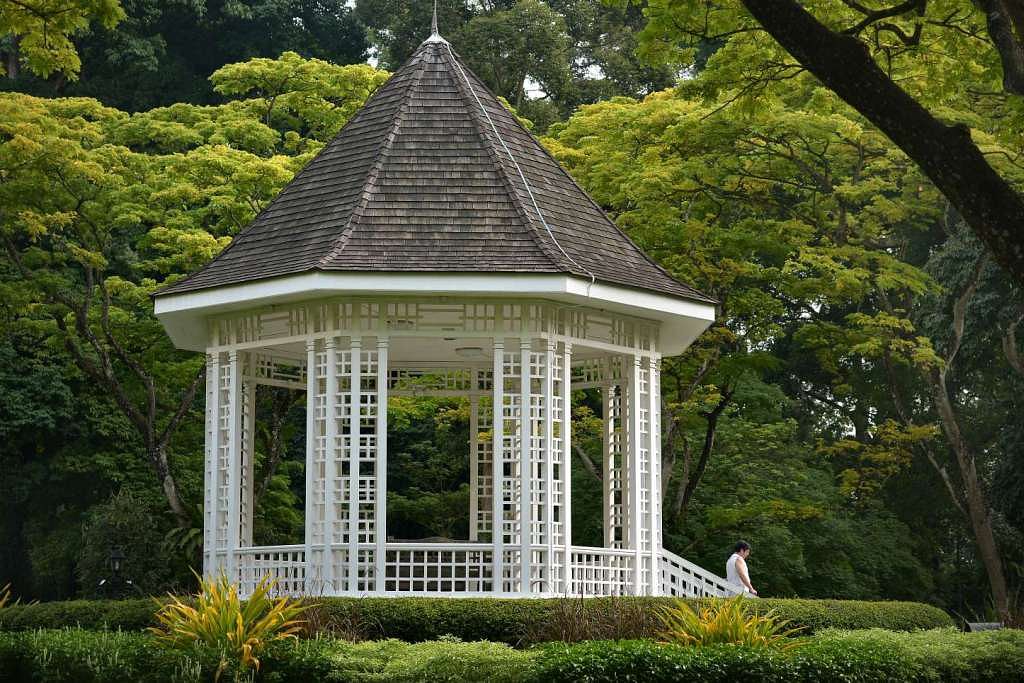
Singapore clinched its first Unesco World Heritage Site title on July 4. The historic moment, when the 156-year-old Botanic Gardens earned the coveted status, happened at the World Conference Centre in Bonn, Germany, where the World Heritage Committee had convened for its 39th session.
The gardens received a resounding "yes" from all 21 members of the committee, who lauded it for its "vast botanical values" and "excellent landscape design".
International experts added that it was a model for the protection and management of botanic gardens and other protected natural areas in urban settings.
The Singapore delegation was led by then Minister for Culture, Community and Youth Lawrence Wong.
He said that it gave Singaporeans a "tremendous sense of pride" that the Republic was home to a site worthy of the status.
The Botanic Gardens was one of 24 sites that made the cut out of a total of 33 that had been nominated. Other properties that joined the list included Jamaica's Blue and John Crow Mountains, China's Tusi sites and the Cultural Landscape of Maymand in Iran.
Prime Minister Lee Hsien Loong described the accolade as a "a great Jubilee year gift to Singaporeans".
The Botanic Gardens is valued for having two outstanding universal qualities: its role in the rubber trade, which transformed the region in the 1900s, and its unique tropical colonial garden landscape.
There are 1,031 properties on Unesco's World Heritage list, but Singapore's is its first botanic gardens in Asia and only the third in the world, besides the Orto botanico di Padova in Italy and England's Royal Botanic Gardens.
A Unesco-appointed panel, called the International Council on Monuments and Sites (Icomos), said the gardens played a pivotal role in the rubber trade in the region. It added that compared with other such gardens in places such as Hong Kong, Penang and India, Singapore had kept its original features intact and was also well-resourced.
Melody Zaccheus
3. Haze spurs govt action, green awakening
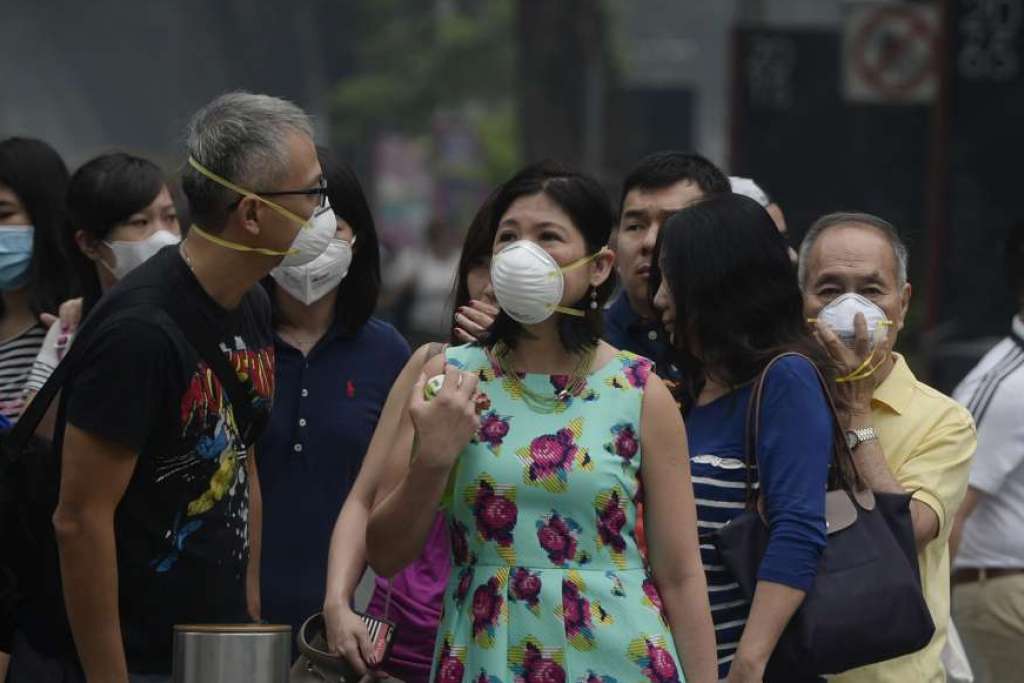
The haze that blanketed Singapore and the region this year was the worst on record, worse than those in 1997 and 2013.
It even led the Ministry of Education to make the unprecedented move of asking students in primary and secondary schools to stay home to avoid the haze.
Singapore suffered the brunt of the haze between September and October , when south-south-westerly winds brought over smoke from Indonesia to the Republic.
On Sept 25, the 24-hour PSI, a measure of air quality here, reached as high as 322 - crossing into the hazardous range for the first time in the year. That day , all primary and secondary schools in Singapore were shut.
This year's haze episode also saw the Government wielding its powers under the Transboundary Haze Pollution Act for the first time.
The Act, passed in August last year, targets those responsible for causing or condoning fires if burning results in unhealthy levels of haze here. Those guilty can be fined up to $100,000 a day, capped at a total of $2 million, for causing unhealthy haze - defined as a 24-hour PSI value of 101 or greater for 24 hours or more.
Singapore began legal action against five companies that it believes are among the culprits behind Indonesia's polluting fires in September.
It served Singapore-listed firm Asia Pulp and Paper a legal notice to supply information on its subsidiaries in Singapore and Indonesia, as well as on measures taken by its suppliers in Indonesia to put out fires in their concessions. Read more here.
Four Indonesian companies were told to take measures to extinguish fires on their land, not to start new ones and to submit plans on preventing future fires.
The haze this year also saw a green awakening among consumers and firms.
A Straits Times poll found that many would not buy from firms linked to the haze. More firms are also looking to certify their products as environmentally friendly.
Audrey Tan
4. Sabah quake kills pupils on excursion
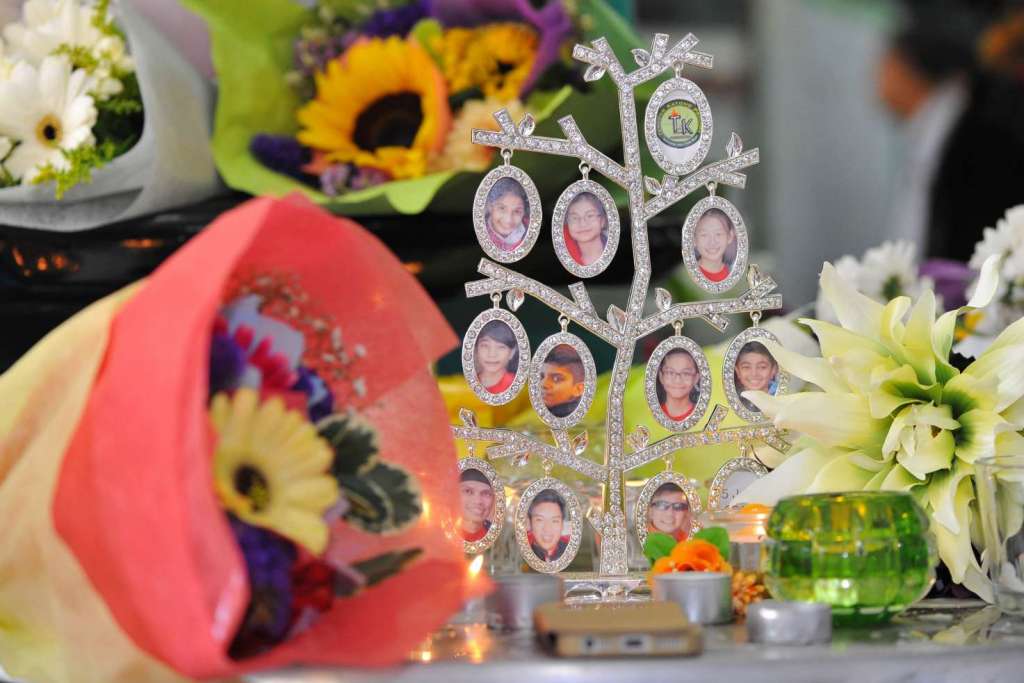
A 6.9-magnitude earthquake struck Sabah on June 5, killing 18 people on Mount Kinabalu.
Ten of them were from Singapore, including seven Primary 6 pupils from Tanjong Katong Primary School (TKPS).
Two teachers and their adventure guide also died.
They were among 29 pupils and eight teachers, accompanied by three guides, who had gone to climb Mount Kinabalu.
This was a yearly leadership training expedition organised by the school.The pupils had trained for three months.
Prime Minister Lee Hsien Loong declared June 8 a Day of National Remembrance for those who died.
State flags on all government buildings were flown at half-mast.
A minute of silence was observed at the start of the day at all SEA Games venues.
The school set up a tribute site for people to pen notes of condolences, which drew thousands.
A fund that was set up to help the families of the two teachers and the adventure guide who died, as well as others, raised nearly $1 million during its collection period from June 23 to Aug 31.
The quake prompted the Malaysian authorities to review safety protocols for Mount Kinabalu climbers. In Singapore, schools halted their trips to the mountain.
The Ministry of Education formed an advisory panel of local and international experts on the safety of outdoor expeditions.
TKPS will not be sending pupils to Mount Kinabalu next year, though the Omega Challenge will continue.
But a group of survivors and their parents, as well as the families of those who died, want to make a trip on the anniversary of the tragedy next year.
One of them, pupil Emyr Uzayr, 12, who suffered a fractured skull, told reporters last month after getting his Primary School Leaving Examination results: "I just want to finish what my friends could not. I am not afraid."
Pearl Lee
5. Night-time alcohol ban cheered by residents
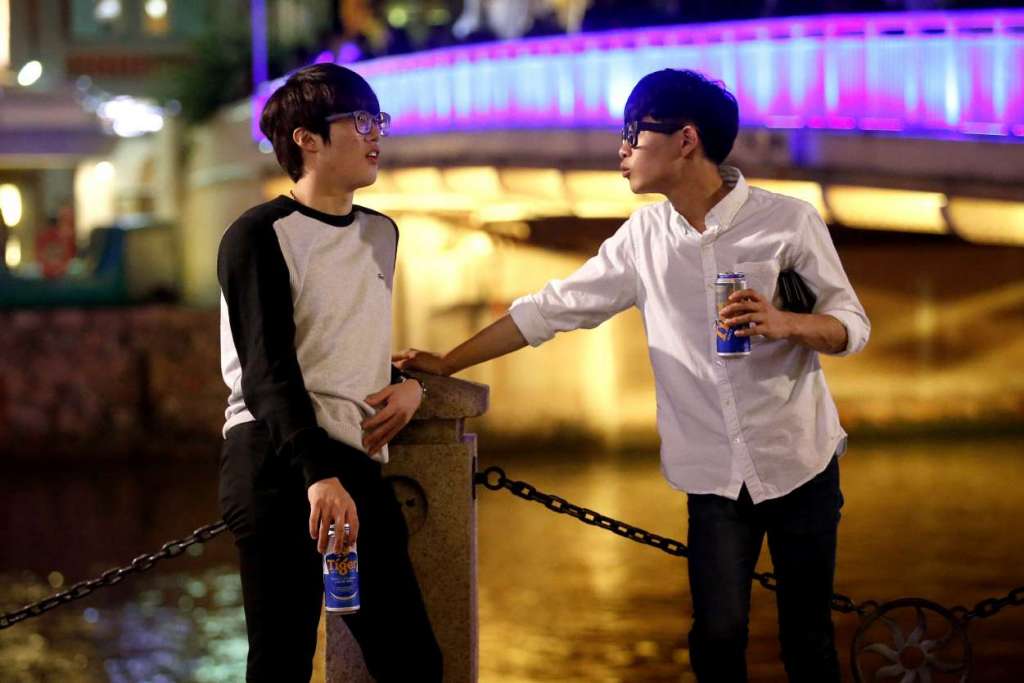
Until April this year, night spots such as Clarke Quay and Robertson Quay teemed on weekends with hundreds of young revellers binge drinking on the cheap with alcohol bought from convenience stores.
This changed after new alcohol restrictions kicked in.
Under the Liquor Control (Supply and Consumption) Act, which was passed in Parliament in January and came into force on April 1, drinking in public, including void decks and parks, is banned from 10.30pm to 7am. Retail outlets also cannot sell alcohol during these hours.
Drinkers who flout the rule can be fined up to $1,000.
Repeat offenders can be fined up to $2,000, and face the possibility of up to three months in jail.
Shops found selling alcohol outside the allowed hours can be fined up to $10,000.
Little India and Geylang, as Liquor Control Zones, have even stricter restrictions.
There were strong reactions to the proposed ban: Young clubbers objected but residents said they were pleased, after years of having to put up with noise and litter.
Retailers were divided between those who supported the new rules and those who worried they would hurt their business.
Mr S. Iswaran, then Second Minister for Home Affairs, told Parliament that police would be measured in their approach and focus on areas where there was public disorder. "It is certainly not the intent of (this Act) to seek out every person who is consuming liquor peacefully in a remote place," he said.
Now, Clarke Quay and Robertson Quay are hardly recognisable.
Far fewer people loiter on Read Bridge and the area outside popular nightclub Zouk. Only a handful can be seen drinking after the permitted hours, but discreetly, hiding their bottles and cans of alcohol in plastic bags.
The result is that both locations today have far less litter, a stark contrast to the past when empty liquor bottles, beer cans, vomit and the occasional passed-out drinker were common sights.
Lim Yi Han
6. Shangri-La shooting raises false terror alarm
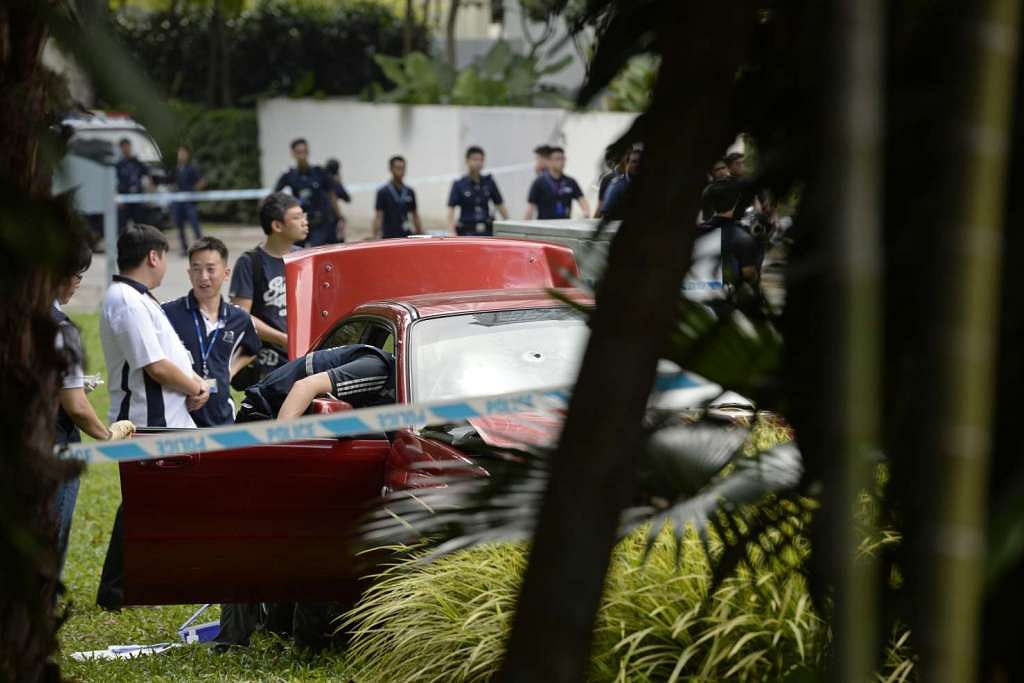
Early on the morning of May 31, Mohamad Taufik Zahar was shot by police just 250m from the Shangri-La Hotel, where a major conference attended by defence ministers and security chiefs had been taking place.
The 34-year-old had floored his accelerator through a police road block when his car was stopped for a security check. An officer then opened fire, killing him on the spot.
The incident made international headlines but terrorism was later ruled out. Instead, drugs were involved.
Nine grams of heroin was found in Taufik's rented Subaru Impreza. His two passengers, Mohamed Ismail, 32, and Muhammad Syahid Mohamed Yasin, 27, were later charged with drug offences.
In June, Ismail was convicted and sentenced to eight years' jail and three strokes of the cane.
This month, Syahid was sentenced to seven years' jail and three strokes of the cane for drug offences and abetting a rash act.
It was he who had panicked and told Taufik to crash through the barriers when the trio were stopped by security officers.
The Home Affairs Minister at the time, Mr Teo Chee Hean, later told Parliament the use of lethal force was provided for under the Criminal Procedure Code.
He noted that in the current security climate, an event attended by top defence officials from around the world was a prime target for terrorists.
The incident also led the Ministry of Home Affairs to review the incident to ensure its protocols continue to be effective in deterring and dealing with security threats.
While the authorities debated and reviewed their security measures, Taufik's wife, Ms Nassida Nasir, mourned the father of her infant daughter.
"I didn't get a chance to kiss him goodbye. My daughter won't get to see him when she grows up," she said.
Danson Cheong
7. MediShield Life kicks in

Two years after MediShield Life was first announced during the 2013 National Day Rally, the national health insurance scheme finally kicked in on Nov 1.
Last month, around 9,000 claims were paid out, said a Health Ministry spokesman. Of these, around 700 people were previously uninsured before MediShield Life was launched.
In a nutshell, MediShield Life offers higher claim limits for hospital bills and some outpatient treatments, such as chemotherapy.
It also covers pre-existing medical conditions, like HIV, previously not covered by MediShield.
Premiums will go up with MediShield Life's improved coverage.
However, the Government has rolled out a host of subsidies to make sure premiums remain within everyone's reach.
The Government and private sector have been working to help people understand the compulsory programme, which covers all Singaporeans and permanent residents (PRs) from birth to death.
The Insurance and Financial Practitioners Association of Singapore, for example, has been organising free consultations to help people understand the changes.
Common questions include the difference between MediShield Life and the old MediShield, and whether or not people with Integrated Shield Plans (IPs) are paying for premiums twice.
Around two-thirds of Singaporeans and PRs have IPs. These provide extra benefits on top of MediShield Life, but can cost significantly more, especially as one ages.
Linette Lai
8. 150 people fall ill in raw-fish scare
Yusheng-style raw-fish porridge was taken off menus this month when it became clear that it was linked to Group B Streptococcus (GBS) bacteria.
Some 150 people became sick with the bacteria after they ate freshwater fish prepared to be eaten raw, said the Ministry of Health (MOH).
It led to a dramatic rise to 355 cases of GBS infections this year, compared with 150 or so annually from 2011 to last year.
GBS is a bacterium commonly found in the gut and urinary tract of 15 per cent to 30 per cent of adults without causing any disease. But it may occasionally cause infections of the skin, joints, heart and brain.
In August, a 50-year-old technician had both his hands and feet amputated.
He had suffered food poisoning after eating a raw-fish dish at a Chinatown food centre.
A 52-year-old man fell into a coma days after eating a bowl of raw-fish porridgelast month.
The earlier cases and their possible link to raw fish made the rounds on social media in July. The National Environment Agency advised stalls not to sell raw fish using song and toman fish.
Last month, MOH confirmed the link between eating such dishes and what appears to be an aggressive strain of GBS bacteria.
On Dec 5, the authorities banned the use of freshwater fish in all ready-to-eat raw-fish dishes. Tests showed such fish had "significantly higher" bacterial contamination than saltwater fish.
Tan Weizhen
9. City Harvest leaders found guilty of fraud

The trial of City Harvest Church leaders ended this year, with all six convicted and sentenced to jail for misusing church funds.
A heady mix of religion, money and scandal, the mammoth 142-day trial divided Singaporeans when it started in 2013.
On Oct 20, the six - including church founder and senior pastor Kong Hee, 51 - were found guilty of using the funds to further the music career of Kong's wife, pastor-singer Ho Yeow Sun.
They had done this by funnelling $24 million into sham bonds to bankroll Ms Ho's career. They then covered their tracks with a further $26 million.
All six drew jail terms of between 21 months and eight years. Kong got the heaviest sentence as the mastermind of Singapore's largest charity financial scandal.
In addition, the Commissioner of Charities barred all six from acting as board members, trustees or key officers of any charities.
This case will also go down as the costliest criminal trial in Singapore, likely to exceed $10 million, said lawyers. Nor is it over yet, with parties on both sides indicating they will appeal.
The prosecution called the sentences imposed "manifestly inadequate", and wants harsher punishment to deter such crimes.
And all six found guilty said they would appeal against their convictions and sentences. They will file their petitions next month, and the appeal would likely be heard within the year.
Danson Cheong
10. Eight die amid SGH hepatitis C outbreak
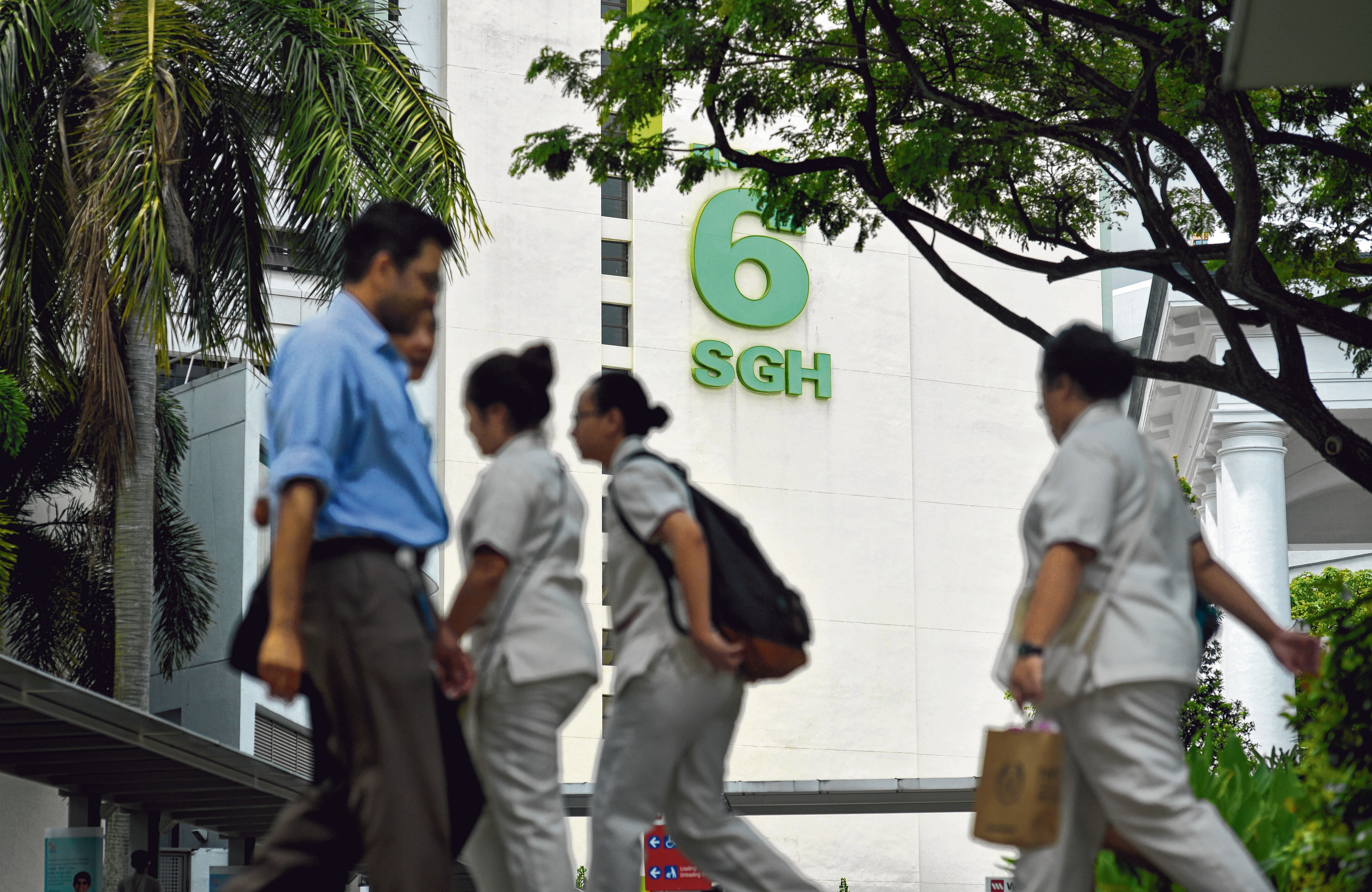
In October, the Singapore General Hospital (SGH) announced it had had an outbreak of hepatitis C in its renal ward which had infected 22 patients.
Three more cases would subsequently be identified. Altogether eight deaths would occur, with the hepatitis C virus infection "a likely contributory factor" in seven of them.
SGH had first noticed the cluster of cases in mid-May and had begun its investigations then.
But by the time it alerted the Ministry of Health to the outbreak, in September, it was no closer to identifying the source of the infections.
Alarmed, the director of medical services at the ministry ordered SGH to step up its screening and, among other things, appointed an independent review committee to investigate the outbreak.
The committee concluded that poor infection prevention and control measures at the hospital was the main cause of the outbreak. For instance, staff had not always followed established standards for procedures such as blood- taking, administering intravenous medication and waste disposal.
This could have led to cross-contamination of equipment such as trolleys and surfaces.
But it ruled out other possibilities such as drug diversion, foul play or sabotage and contaminated medical products.
A task force, led by Minister of State for Health Chee Hong Tat, has been set up to boost the healthcare system's ability to detect and respond to disease outbreaks.
It will look at best practices in other countries, and is expected to complete its work by the middle of next year.
Tan Weizhen

